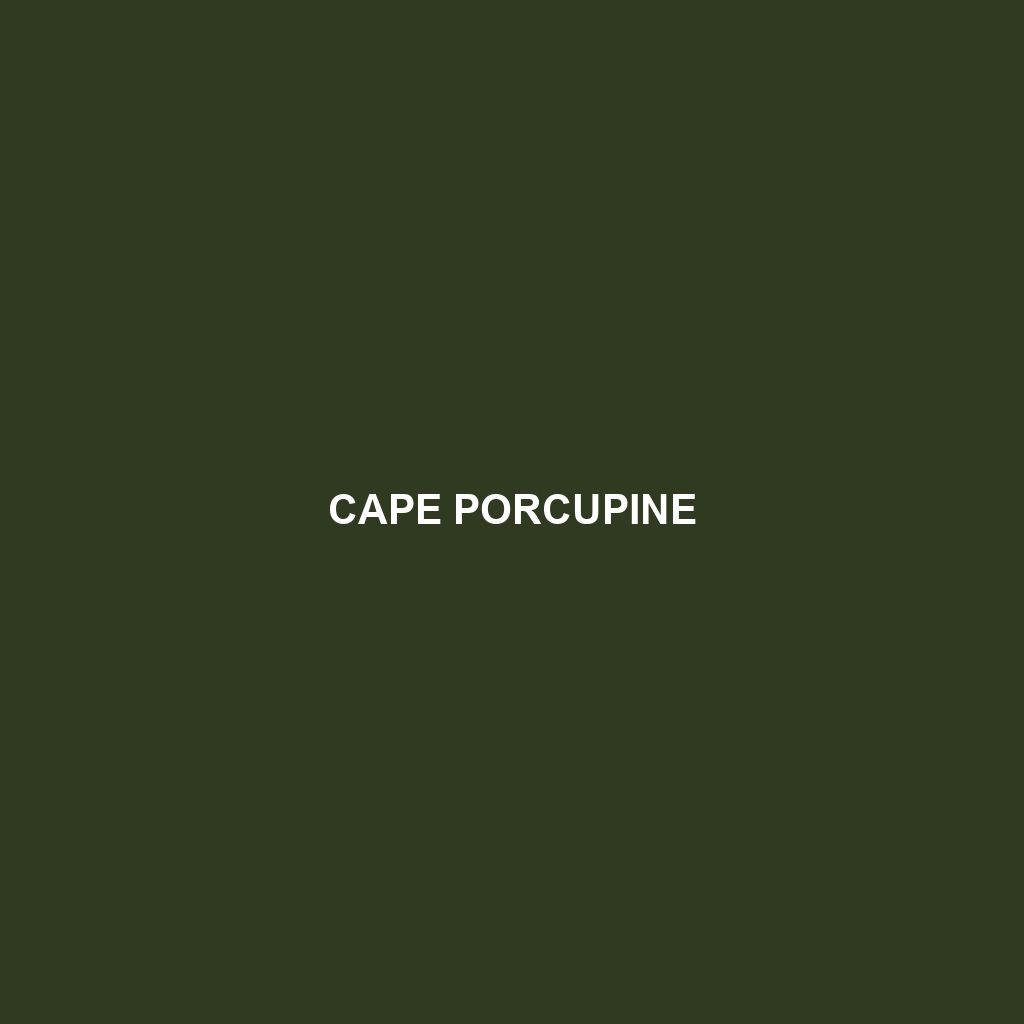Cape Porcupine
Common Name: Cape Porcupine
Scientific Name: Hystrix africaeaustralis
Habitat
Cape Porcupines are primarily found in southern Africa, particularly in countries such as South Africa, Namibia, Zimbabwe, and Botswana. They prefer a variety of habitats, including savannas, forests, grasslands, and scrublands. These rodents are adaptable, often making their homes in rocky outcrops or burrows, which provide shelter from predators and harsh weather conditions.
Physical Characteristics
Cape Porcupines are large rodents, measuring about 60 to 90 cm (24 to 35 inches) in length, not including their long quills. They can weigh between 10 to 27 kg (22 to 60 pounds). Their coat is predominantly black or dark brown, and they are easily recognized by their characteristic long, sharp quills that can measure up to 30 cm (12 inches) in length. The quills serve as a defense mechanism against predators and can become erect when the porcupine feels threatened.
Behavior
Cape Porcupines are primarily nocturnal, foraging at night for food. They are known for their solitary or pair-living habits, though they sometimes gather in small groups. Their behavior includes climbing trees to feed on leaves and fruit; they are also known to dig extensively for roots and tubers. When threatened, they will typically raise their quills and use them as a defense mechanism. Cape Porcupines are also known for their vocalizations, which include grunts and growls.
Diet
The diet of Cape Porcupines consists mainly of vegetarian materials. They primarily feed on bark, roots, tubers, fruits, and leaves of a variety of plants. Their strong teeth are adept at gnawing through hard materials, allowing them to access nutritious food sources. As herbivores, they play an important role in their ecosystem by helping to maintain plant diversity through their feeding habits.
Reproduction
Cape Porcupines typically breed once a year, with a gestation period of approximately 60 to 90 days. The breeding season generally occurs in late summer to early fall. Females usually give birth to one to three offspring, which are born fully furred and equipped with soft quills that harden within a few days. Parental care is provided primarily by the mother, who nurses the young until they are independent.
Conservation Status
The current conservation status of the Cape Porcupine is classified as “Least Concern” by the International Union for Conservation of Nature (IUCN). However, habitat loss and hunting in some regions have raised concerns for localized populations, making conservation efforts important to ensure their long-term survival.
Interesting Facts
– Cape Porcupines are among the largest rodents in the world.
– They can generate a loud noise by shaking their quills, which can be a warning to potential predators.
– Unlike many other rodents, Cape Porcupines have the ability to climb trees, often seeking fruits and leaves.
Role in Ecosystem
Cape Porcupines play a significant role in their ecosystem by helping to aerate the soil through their digging and by contributing to the dispersal of plant seeds through their diet. Their feeding habits can help to regulate plant populations and maintain ecological balance in their habitats. By enabling seed dispersal of various plants, they also aid in the regeneration of forests and other vegetation.
